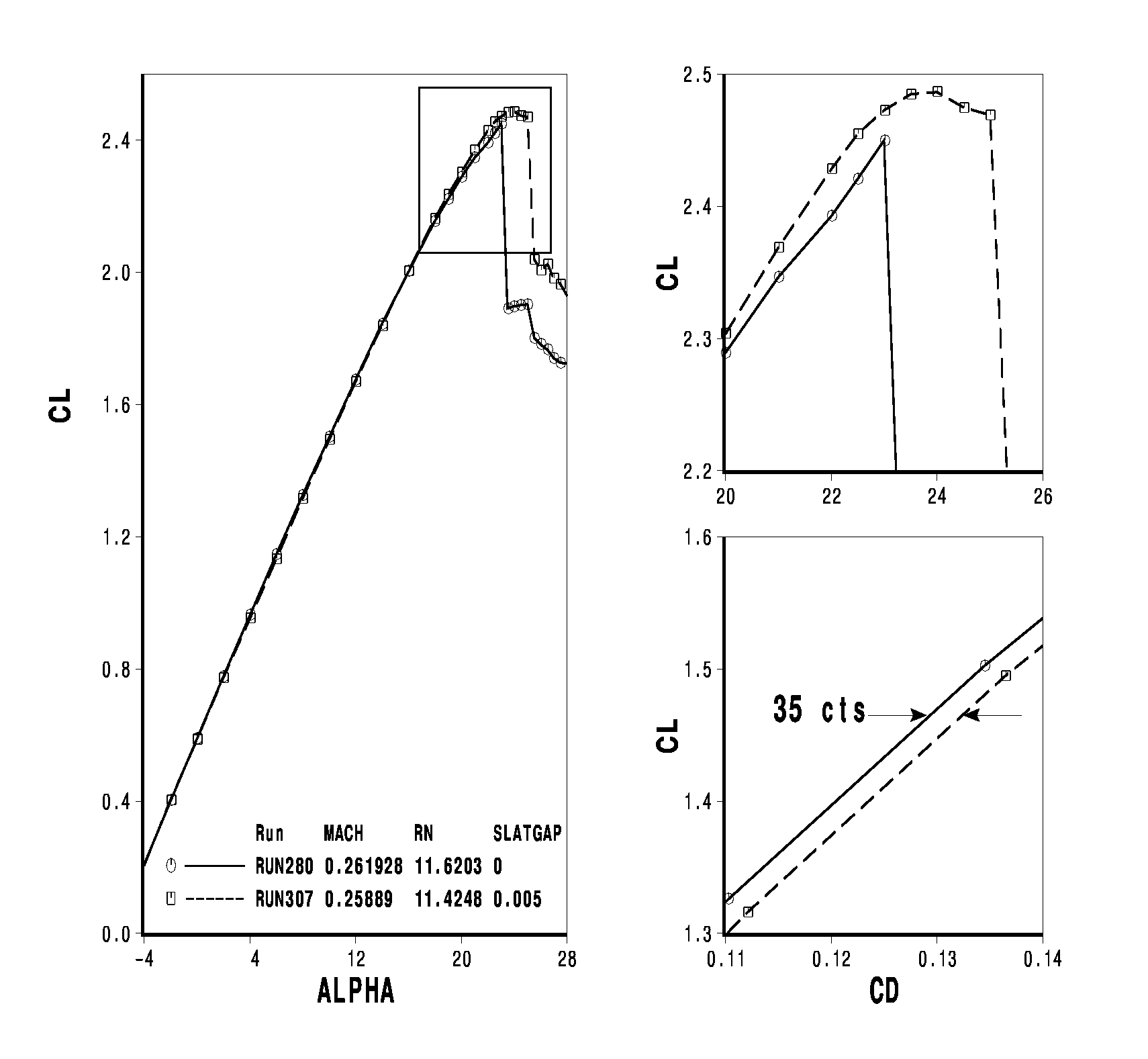
CFD Challenge – Slat Sealing Effects
In the takeoff configuration, the slat was deflected 20 degrees and the flap was deflected 10 degrees. The surface-one (wing leading edge that is exposed when the slat is deployed) was designed to seal to the slat trailing edge along the entire span at the takeoff configuration. The sealed slat is preferable in order to minimize drag, but can lead to undesirable stall characteristics. A critical capability for a CFD tool useful to the high-lift designer is the ability to predict increments in drag and CLmax due to a gapped slat.
A comparison of sealed and gapped (gs/c=0.005)
results for the takeoff configuration is shown in the figure below. No
differences in CL are visible for CL<2.2. At higher angles of attack,
the gapped slat produces more lift (DCLmax
= 0.04), and stalls 2 degrees later. Gapping the slat also increases drag
by 35 counts.

Effect of gapped slat on takeoff configuration lift and drag.
return to Data Archive home page
Page Curator and NASA Official Responsible for Content
Judith A. Hannon
Last Updated
August 5, 2011